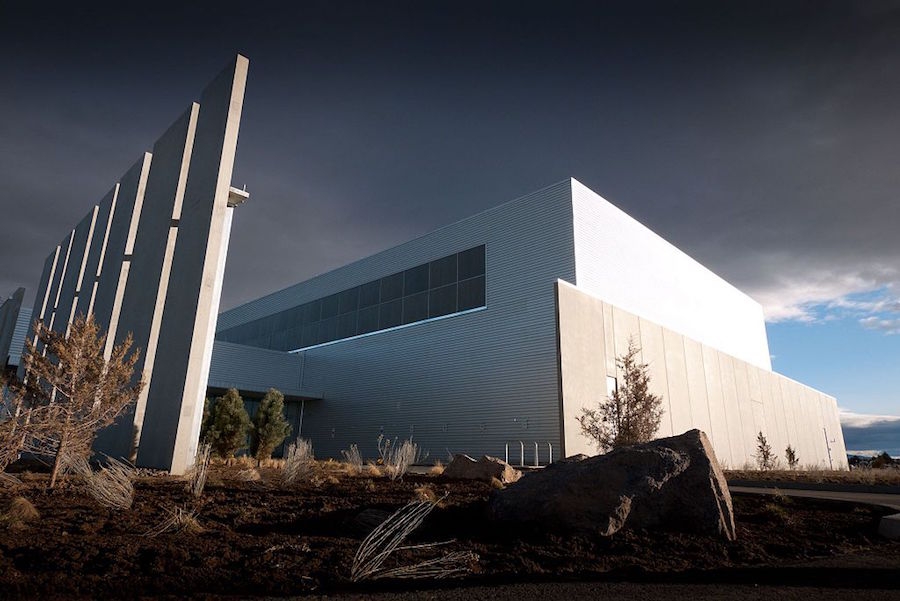New designs bring power consumption under control.
As more tech companies brand themselves as sustainable, they need to confront a green elephant in the room: data centers. Every Google search, Facebook photo or Youtube video creates information that must be stored. Much of it travels to vast banks of servers tucked away in the deserts of Prineville or Umatilla County.
These data warehouses cycle through vast quantities of water and electricity, which produces greenhouse gas emissions. The environmental group Greenpeace dubbed them the factories of the digital age. Most occupy inefficient sites in hot desert or temperate climates. The information technology sector generates about 2% of the world’s greenhouse gas emissions, roughly as much as the aviation industry.
As the amount of data we generate increases exponentially over the coming years, so will the energy consumption of data centers. Intel estimates that autonomous cars, with hundreds of on-vehicle sensors, will generate 40 terabytes of data for every eight hours of driving. Facebook, LinkedIn and Google note in their latest SEC filings that they plan to significantly expand the footprint of their data centers.
An Oregon startup is tackling this problem by peddling 25,000-square-foot shiny aluminum domes that resemble flying saucers. The company, Server Dome, licensed the design from Oregon Health and Science University. The school has operated a $22 million “Data Dome” on its Marquam Hill campus for four years.
A server dome white paper states that terawatt-hours demanded by data centers will triple within the next 10 years. CEO Bruce Brady says the company is working with angel investors and “large name-brand banks like Goldman Sachs.”
“We’ve never been at this place in society where the demand for data has been increasing year over year,” Brady says. “It’s only just begun.”
“We’ve never been at this place in society where the demand for data has been increasing year over year,” Brady says. “It’s only just begun.”
The startup has yet to generate revenue, but Brady says he’s secured “tentative commitments” from international customers for domes priced between $20 million and $40 million.
In the world of data storage, that’s a steal. The U.S. Chamber of Commerce notes that a typical data center for a company like Facebook requires initial capital expenditures of $215 million, with additional maintenance and staffing costs running into the millions. Server Dome says maintenance for all four years of the OHSU dome’s operation cost just $5,000.
The geodesic dome design funnels heat toward the top of the structure and circulates cool air more efficiently. It doesn’t rely on expensive fans that force air through the large facilities to cool the servers.
Emily Findley, a spokesperson for Energy Trust of Oregon, says the energy conservation nonprofit hasn’t seen another data center incorporating the dome-shaped design.
The industry-standard measure of energy efficiency is Power Use Effectiveness (PUE). A PUE of 1 indicates 100% efficiency, with all the energy consumed by the center going to running the processors themselves. Conventional data centers record a PUE of 1.64.
In 2012 concerns began to mount that Oregon’s data centers would devour too much of the region’s power supply. Prineville struggled to provide power to new businesses after meeting the demands of data centers.
Richard Devlin, a member of the Northwest Power and Conservation Council, says those fears have largely subsided as the facilities make technological improvements and draw more of their energy from wind and solar. Devlin feels confident that advances in computing and market incentives will keep the power consumption in check. Google notes in its 10-K annual report that advances in machine learning could better regulate energy usage in its large data centers.
“The projection of unchecked growth has not proved to be the case,” Devlin says. “Usage has grown, but not at the rate anticipated.”
The data dome drives down PUE to around 1.13. Some “hyperscale” data centers, like those built by Facebook and Apple in Prineville, can achieve that level, but they require massive inputs of water and vast tracts of land to do so.
The smaller structure also demands less staff, potentially eliminating some data center jobs. However, large data centers offer few jobs compared to other facilities of similar size.
Oregon has made itself a hub for these enterprise-scale data centers. The state’s absence of a sales tax saves companies thousands on outfitting the facilities with hardware, and its enterprise zones confer large tax breaks. Oregon data centers are generally more energy efficient, drawing on a ready supply of hydropower.
Inventions like the dome could change Oregon’s data center landscape. Companies might not need to rely as much on the state’s cheap power and land, and could push their facilities into more extreme climates. Besides a desert like sub-Saharan Africa, Brady says, the dome works pretty much anywhere else.
Devlin says the power council will continue to monitor the growth and power consumption of data centers, but that it has become “fairly predictable.”
To subscribe to Oregon Business, click here.






